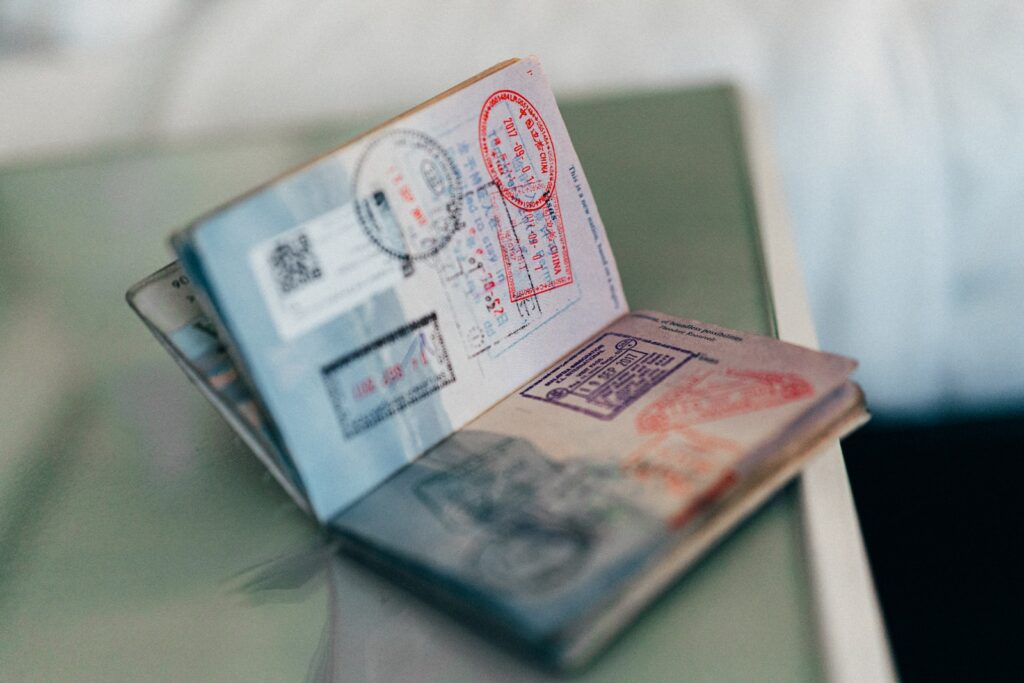A non-immigrant visa is an official document that serves as an entry and stay permit, allowing individuals to temporarily enter the United States for a specific purpose without the intention of immigration. These visas are granted for various purposes such as tourism, business, employment, or education.
With the exception of U.S. citizens and green card holders, individuals wishing to enter and stay in the U.S. legally must obtain a visa through legitimate means. While certain purposes may exempt individuals from the need for a visa based on treaty agreements, in most cases, having a valid visa aligned with the intended purpose of entry into the U.S. is essential. For instance, citizens of South Korea can enter the U.S. for tourism or business purposes for up to 90 days using the Electronic System for Travel Authorization (ESTA) without a visa.
Non-Immigrant work visas
Temporary work visas are granted to individuals seeking employment in the United States for a specified duration, typically involving seasonal or temporary work. Common types of non-immigrant work visas include the H-1B visa for professional employment, L-1 visa for intracompany transfers, and O-1 visa for individuals with extraordinary abilities. These employment arrangements are temporary and do not extend indefinitely. For example, H-1B visas are typically granted for a maximum of six years, which can include renewals or extensions; whereas L-1 visas can be granted for a maximum of seven years for an indiviual. O-1 visas, on the other hand, can be continuously extended, with an initial period of up to three years.
Student visas
For educational purposes, the F-1 visa is widely chosen by international students pursuing full-time programs at accredited U.S. educational institutions, including high schools, colleges, universities, and language schools. While F-1 visa holders are generally restricted from employment or profit activities, exceptions may allow on-campus employment during the visa’s validity period. Alternatively, the M visa is designed for vocational or technical training programs, excluding language programs requiring an F visa.
Visiting visas
For visitors coming to the United States for tourism or temporary business, obtaining a B-1 business visa or B-2 tourist visa is necessary, unless eligible for the Visa Waiver Program. Countries eligible for visa waiver programs, like South Korea, can register through the ESTA program for visa-free entry, with a 90-day maximum stay without extension, and necessitating proof of strong ties to the home country to prevent overstaying. For those ineligible or requiring stays longer than three months, B-1 business visas or B-2 tourist visas must be obtained. To obtain either the B-1 or B-2 visa, the applicant will need to provide documentation that outlines the exact reasons for their stay, along with their scheduled itinerary. The validity period of B-1/B-2 visas varies from three months to ten years, allowing multiple entries into the U.S., with a maximum stay of six months per entry. To extend your stay in the United States, another application must be submitted at least 45 days prior to your original expiration date, however, it may be rejected.
Religious worker visa
Religious workers seeking to work for a particular religious denomination or sect can apply for the R visa. To obtain an R visa, individuals must meet the qualifications set by the specific religion, and the petitioning religious organization, church, or denomination must also meet financial eligibility requirements. R visa holders are allowed to stay in the U.S. for a maximum of five years, including extension applications.
How to apply for a US non-immigrant visa
With the exception of the ESTA visa waiver program, all non-immigrant visas can be obtained from U.S. embassies or consulates located outside the United States. The application process is as follows:
- Complete DS-160: Fill out the visa application form (DS-160).
- Paying Visa Fee: Make the visa fee payment on the embassy’s website, the amount of which varies depending on the type of visa.
- Scheduling Interview Date: Reserve an interview date through the the embassy’s website.
- Required Documents: Must prepare passport, confirmation page of Form DS-160, proof of visa payment, and a printout of your interview appointment letter before you attend the interview.
- Embassy Interview: Attend the scheduled visa interview at the embassy.
- Acquisition: Upon successful completion of the interview, the visa will be issued by the embassy.
